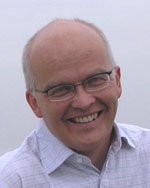Arranged jointly with Finnish Society for Medical Physic and Medical Engineering, LFTY
Monday the 1st - Friday the 5th of February, 2010
House of Sciences and Letters (Tieteiden talo)
|

|
Lecturer: |

|
4 ECTS
Description
The analysis of bioelectrical signals continues to receive wide attention in research as well as commercially because novel signal processing techniques have helped to uncover valuable information for improved diagnosis and therapy. This book takes a unique problem-driven approach to biomedical signal processing by considering a wide range of problems in cardiac and neurological applications?the two "heavyweight" areas of biomedical signal processing. The interdisciplinary nature of the topic is reflected in how the text interweaves physiological issues with related methodological considerations. Bioelectrical Signal Processing is suitable for a final year undergraduate or graduate course as well as for use as an authoritative reference for practicing engineers, physicians, and researchers. Solutions Manual available online at http://www.textbooks.elsevier.comAudience
Biomedical Engineers, Electrical Engineers, Signal Processing Engineers, Electrocardiologists and other medical professionals involved in biomedical engineering research and biomedical instrument/device development.Requirements
Participation to the lectures and Problem solving sessions."Problem solving" is synonymous to solving a number of problems listed at the end of the book chapters. Doing this would be to illustrate some of the methods and to deal with practical issues in the method's application. The sessions do not require anything but pen and paper.
Course material:
Textbook:
Leif Sörnmo and Pablo Laguna: "Bioelectrical Signal Processing in Cardiac and Neurological Applications"
Academic Press Series in Biomedical Engineering, ISBN 0124375529, Academic Press, Elsevier, 2005.
Academic Press Series in Biomedical Engineering, ISBN 0124375529, Academic Press, Elsevier, 2005.
Registration:
jari.viik@tut.fi
Tentative Schedule:
| Date | Time | Course Program |
| Mo 01.02.2010 | 09.00 | Registration & Coffee |
| 10.00-10.15 | Professor Jaakko Malmivuo: Welcome | |
| 10.15-12.00 | The electroencephalogram (EEG): its origin, measurement, and applications | |
| 12.00-13.15 | Lunch break | |
| 13.15-14.00 | Noise, artefacts, and their removal | |
| 14.00-14.15 | Coffee break | |
| 14.15-16.00 | Spectral analysis, time-frequency analysis | |
| Tu 02.02.2010 | 09.15-11.00 | Problem solving |
| 11.00-11.15 | Coffee break | |
| 11.15-12.00 | Evoked potentials (EP): their origin, measurement, and applications | |
| 12.00-13.15 | Lunch break | |
| 13.15-15.00 | Ensemble methods for noise reduction | |
| We 03.02.2010 | 09.15-11.00 | Problem solving |
| 11.00-11.15 | Coffee break | |
| 11.15-12.00 | Orthogonal expansions (including the Karhunen-Loeve), the discrete wavelet transform, multiresolution analysis, and their application | |
| 12.00-13.15 | Lunch break | |
| 13.15-15.00 | Continued | |
| Th 04.02.2010 | 09.15-10.00 | The electrocardiogram (ECG): Its origin, measurement, and applications |
| 11.00-11.15 | Coffee break | |
| 11.15-12.00 | Noise, artefacts, and their removal | |
| 12.00-13.15 | Lunch break | |
| 13.15-15.00 | QRS detection, delineation, and data compression | |
| Fr 05.02.2010 | 09.15-10.00 | Problem solving |
| 10.00-10.15 | Coffee break | |
| 10.15-12.00 | Heart rate variability: its origin and analysis | |
| 12.00-13.15 | Lunch break | |
| 13.15-15.00 | QRS detection, delineation, and data compression | |
| 15.00 | End of the course |
![]()
